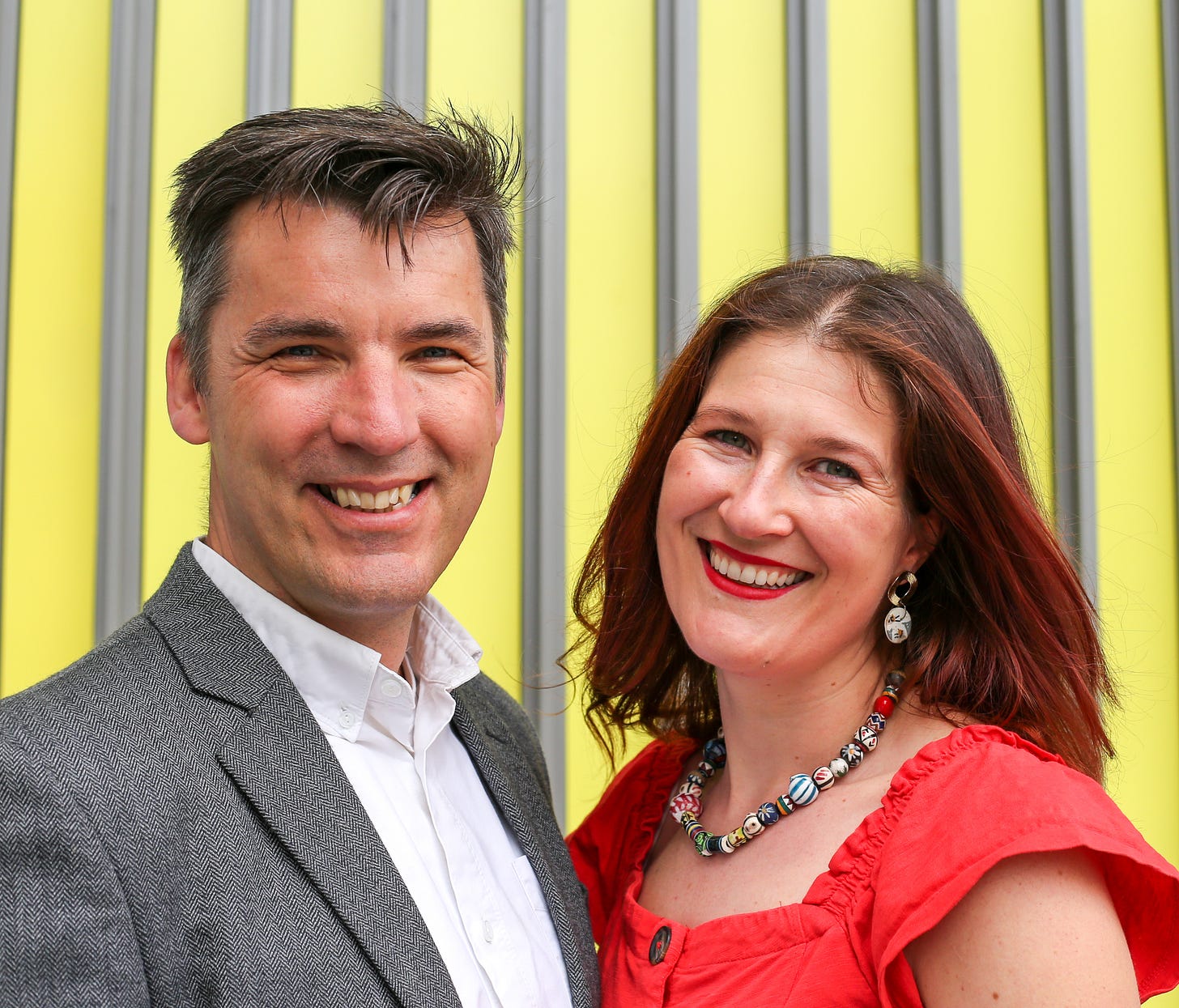Today’s article…
is all about the art of spotting a major donor in disguise.
We’re delighted to share it with all subscribers, paid and free.
Next week we’re tackling the topic of spraying and praying (and not in a feline way…). If you’d like to read this piece (and all 60 in the archive), you can upgrade your subscription today.
Thank you all for being here and have a fantastic week,
Tony and Caroline
How to spot a major donor in disguise
by Caroline Danks

Picture description: a person in a grey t-shirt with their hand over their face, hiding from the sun.
When you’re trawling through a trust’s Charity Commission record, trying to decide if a trust or foundation is a good prospect for your organisation, there are several indicators that suggest you might want to hand them over to your major donor colleagues.
If you don’t have major donor colleagues and it’s down to you, then you’ll want to reconsider your approach for these trusts, who are actually masquerading as major donors in disguise.
Factors to look out for to help you spot a major donor in disguise are:
Settlor / founder is on the trustee board
Trustees are few in number and appear to be members of the same family
Donations are few in number and can be supportive of seemingly unconnected causes
Donation amounts lack uniformity
Total amount donated can vary year on year (more than for a democratically or third party managed charitable trust)
In a workshop I created last year, I shared the example of the Stoneygate Trust.
Allow me to re-share here:
From the image above which shows a list of trustees of the Stoneygate Trust’s Charity Commission record, you’ll see there are four trustees.
Titles are always interesting so I’m going to Google Sir William and Lady Nadine first.
I find a company called ‘WA Capital’ and a profile of Sir William or ‘Will’ in which he shares that he’s the founder of the Stoneygate Trust.
Founder on the board – tick
Now let’s look at some of their gifts…
My observations
There’s no uniformity regarding amounts
There are some connecting themes - universities, research, health, East Midlands.
The biggest gifts are to the University of Leicester to Kidney Research UK – the super size nature of these gifts suggests a personal connection to Kidney disease and (probably) that the settlors live in the East Midlands.
There is a gift to Westminster Abbey which is unconnected to others and feels a bit random.
You seldom see this kind of randomness in the gift list of the John Ellerman Foundation or the Esmee Fairbairn Foundation.
I bet your bottom dollar that the brilliant fundraisers at Kidney Care UK and Leicester Uni (**waves**) didn’t write a proposal and cross their fingers. There will have been so much more to these donations.
Bid writer or relationship manager?
Those of us who are trust fundraisers often sit more comfortably in what many describe as a ‘bid writer’ role. It might be that you’re happiest in a role crossing over with statutory or grant fundraising, clear criteria for application and relationships are secondary or non existent.
For some of us, our work intersects with major donor fundraising and our practice is more relationship focused (this is me btw!).
Explore which of these best meets your skills and interests if you haven’t already – I wrote an article for our paid subscribers about this last year.
Decide whether you’re the right person to be advancing a relationship with a trust that isn’t actually a trust but is really a major donor.
Foccacia not flatbread
This lesson serves as a reminder that every charitable trust is unique and we group them together at our peril.
Come back and read this post any time you’re tempted by the thought of a ‘trusts mailing’.
The written proposal is such a small part of successful trust fundraising, especially for trusts like the Stoneygate Trust where conversations are likely to play a much larger part.
If your trust fundraising practice is a sandwich and your proposal is the filling, then consider the bread either side to be:
Research
More research
Building relationships
Conversations
Stewardship
Reporting
Thanking
Too many of us (and I am of course guilty of this at times) make a sandwich with a flatbread – focusing too much on the filling.
But I invite you to ramp up the volume and make your sandwich with focaccia instead, ensuring that the proposal part is equal to the effort that goes in on either side.
The checklist again
So, when you’re about and about in the big bad world of prospect research (aka the wilds of the Charity Commission website), look closely for the following:
Settlor / founder is on the trustee board
Trustees are few in number and appear to be members of the same family
Donations are few in number and can be supportive of seemingly unconnected causes
Donation amounts lack uniformity
Total amount donated can vary year on year more than for a democratically or third party managed charitable trust
And if you call yourself a bid writer – don’t do anything with the Stoneygate Foundation.
Want more research ideas? Try these articles too…
Finding new supporters (for paid subscribers)
Totally run out of funders to apply to? (for paid subscribers)
The one time you can spray and pray (for paid subscribers)







